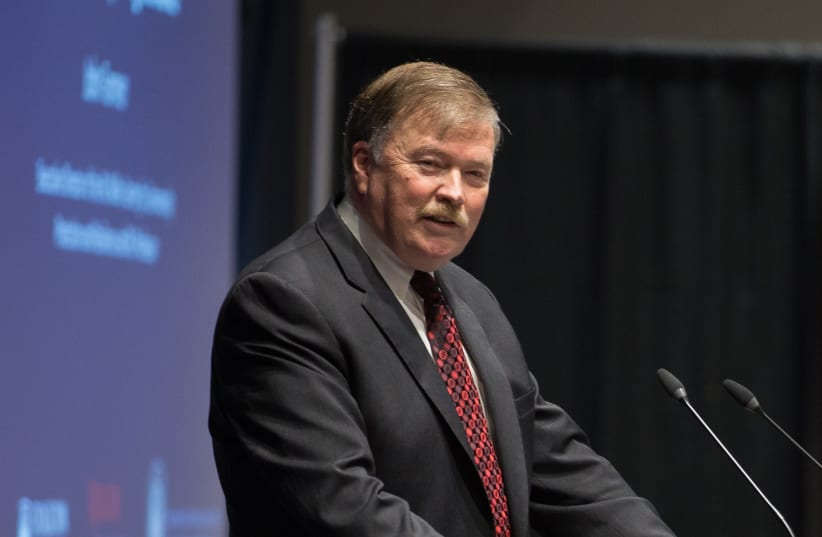Like the Holocaust itself, the scale of the vandalism and violence unleashed on “Kristallnacht,” November 9 and 10, 1938, was so vast that individual atrocities become lost in the numbers: more than 1,000 synagogues burned or otherwise destroyed; 7,500 Jewish businesses vandalized and looted; at least 91 Jews killed that night, and some 30,000 Jewish males arrested and taken to concentration camps, where hundreds were murdered. As Martin Gilbert puts it in his book The Holocaust, “Bonfires were lit in every neighborhood where Jews lived. … In thousands of streets, Jews were chased, reviled and beaten up. … No village in which Jews still lived was immune from the destruction.”
Three episodes from the aftermath of Kristallnacht signify the Jewish community’s utter abandonment – by law enforcement, by other faiths, and by other nations -- and underscore the need to commemorate and learn from that shameful night today. First, according to Gilbert, when sixty-two of the arrested Jews, including two rabbis, were escorted by the police to Sachenhausen concentration camp, “[a]t the gates, the police were made to hand them over to an SS unit. The sixty-two Jews were then forced to run a gauntlet of spades, clubs and whips. According to an eyewitness, the police, `unable to bear their cries, turned their backs.’” Twelve of the sixty-two didn’t survive the gauntlet beating, while the rest lay unconscious, some missing eyes, others facially unrecognizable. Police throughout the Reich were ordered not to interfere in the violence against the Jews; where they did not participate, they looked the other way.
If the Jews could not turn to law enforcement to protect them, neither could they turn to the leaders other faiths, of the 40 million Protestants and 20 million Catholics, who remained silent where they were not complicit in the Nazis’ dehumanizing antisemitism. When individual pastors did speak out, moreover, they themselves became subject to persecution. Gilbert recounts that Pastor J. Von Jan in Swabia condemned Kristallnacht, preaching: “Houses of worship, sacred to others, have been burned down with impunity. Men who have loyally served our nation and conscientiously done their duty, have been thrown into concentration camps simply because they belong to a different race. Our nation’s infamy is bound to bring about Divine punishment.” Pastor Jan was dragged out of Bible class, brutally beaten, and his vicarage destroyed.
Kristallnacht was condemned by the leaders of other nations, but the condemnation was largely rhetorical. As a recent documentary on “The U.S. and the Holocaust” recounts, President Roosevelt condemned Kristallnacht, stating that he could “scarcely believe that such things could occur in a twentieth century civilization”; he was also the only leader to recall its nation’s ambassador to Germany, and he extended the visas of German Jews. American outrage, however, did not extend to changing in American immigration policy; the next year the St. Louis, a ship containing many families who had decided after Kristallnacht to leave their homes, was turned away from Cuban, American, and Canadian ports and sent back to Europe.
Kristallnacht was intended to appear as a spontaneous eruption of outrage among rank and file Germans; in reality, it was the culmination of a systemic and successful effort to isolate the Jewish population legally, socially, educationally, and culturally. Kristallnacht brought to light the naked vulnerability of the Jewish population. Having already been stripped of the attributes of legal personhood by the Nuremberg laws and other measures, Kristallnacht signaled the abandonment of the Jewish population by the very institutions of civil society responsible for protecting the public from criminal acts and providing safety from fire. In fact, the police and fire services were conscripted to aid in the destruction. On Kristallnacht, hate migrated permanently across the blood-brain barrier of extremism and became open and state-sponsored violence. The weakness of the international response served only to embolden the Nazis.
Commemorating Kristallnacht is particularly urgent today. We live in a world of vulnerable diaspora populations – an estimated one-seventh of the world’s population now lives apart from land of their ethnic origin – in which antisemitism and other forms of religious bigotry are resurgent, houses of worship of every faith are under constant threat, and in which hatred spreads transnationally on social media and erupts frequently into violence. We at the Miller Center for Policing Excellence and Community Resilience are committed to working to assure that the kinds of isolation and estrangement that led to Kristallnacht are not repeated; that relations between police and the communities they serve are based on trust and open channels of communication; and that it is never again acceptable, anywhere, to look the other way.
By shining a light into the darkness of that night of broken glass, we expose those events to the light of truth that banishes that night of darkness, the light of truth that shames every form of hate.
This article was written in cooperation with John Farmer, director of the Miller Center for Protection and Resilience at Rutgers University.
